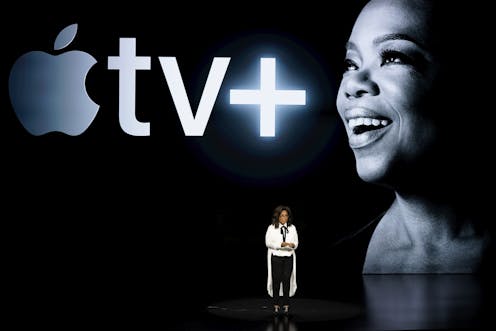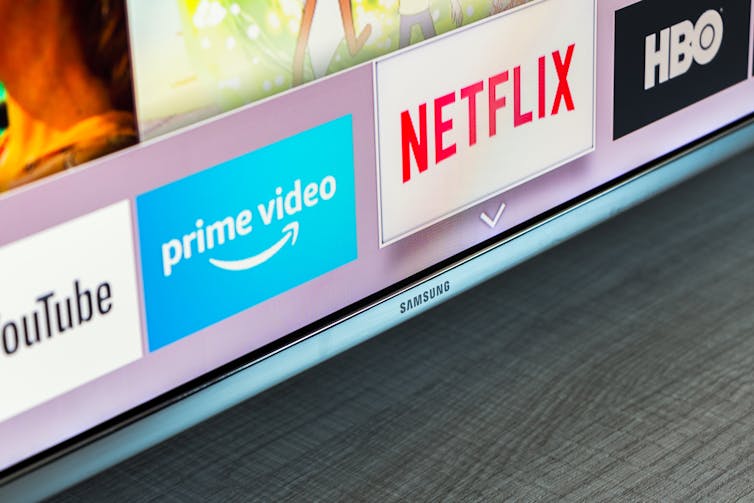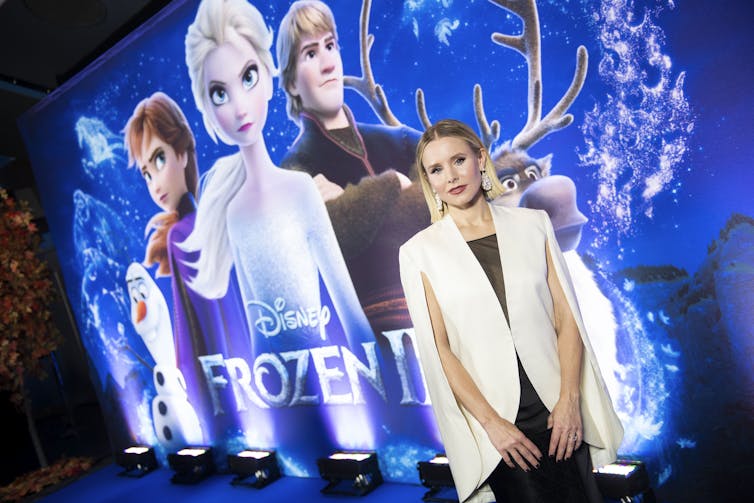Apple, Disney and Netflix's streaming battle isn't winner-take-all
Although some have dubbed the flurry of new video services coming out as a 'streaming war,' the reality is very different.

With the recent launch of Apple TV Plus and the imminent arrival of Disney Plus, the video landscape has never looked so competitive.
These services join a crowded marketplace of subscription streaming services that includes Netflix, Hulu and Amazon Prime Video – with more to come next year. For viewers, the proliferation of services means more choice in shows and services. For the companies, it means increased competition for talent and escalating budgets.
Although many publications have described the situation as “streaming wars,” these companies have different goals for each of their video services.
We have been studying the recent boom in subscription video streaming to understand the implications for audiences and industry. Contrary to all this reporting, we find little evidence of a “streaming war.”
In fact, many of these services are playing different games.
Diverse strategies
The major streaming services – both old and new – all have different catalogs, pricing and strategies. While all services seek viewers’ time and attention, in other respects they are different beasts.
Take Disney Plus. Disney’s strong suit is kids, family and its popular Marvel and “Star Wars” content. It has also invested in a few original series such as “The Mandalorian,” a “Star Wars” spin-off.
But unlike Netflix, Disney Plus doesn’t offer a full-service entertainment package. With its lowball pricing of US$7 per month compared with $13 for Netflix’s most popular plan, Disney Plus is pitched as a service to have alongside Netflix, rather than a direct replacement.
Similarly, Apple TV Plus – which debuted on Nov. 1 for $4.99 a month – has a tiny catalog of high-profile shows and stars, such as Oprah and Jennifer Aniston. Compared with Netflix’s library of 5,000 titles, Apple TV Plus is a minnow. Its purpose is to add value and glamour to Apple device purchases not to replace another service.
In other words, neither Disney Plus nor Apple TV Plus is likely to be a “Netflix killer” anytime soon.

Netflix is global
Another key difference between Netflix and services such as Disney Plus, Hulu and Apple TV Plus is the amount of global content in the former’s library.
Today, six out of every seven new Netflix subscribers live outside the U.S. The global market is essential for Netflix’s future growth.
To support this endeavor, it is spending considerably on producing shows outside the U.S., and this original content is available to subscribers worldwide. Of course not every viewer is interested in series produced elsewhere, but Netflix is making the bet that sci-fi fans will turn up for a good adventure whether it is produced in the U.S. or Brazil.
In contrast, Disney and Apple are following a more traditional U.S. export model of media globalization.
Room for other players?
Many questions remain about the future of Hulu now that its owners – Disney and Comcast – are launching other services.
Hulu provides a distinct service as a source of current series produced for Disney and NBC. Viewers that are cutting cable and satellite service – a trend that has increased in the last year – may find Hulu a good replacement.
And more change is coming. Comcast announced a service called Peacock for next year. Peacock will draw heavily from the library of shows Comcast owns as the corporate parent of NBC and Universal. It will be free to Comcast subscribers and possibly to everyone.
Meanwhile, AT&T will launch HBO Max – the new direct-to-consumer portal for HBO content, some original series and titles from the Warner Bros. library such as “Friends.”

What winning means
In other words, the question of who will “win” the streaming war is more complicated than it appears.
Rather than one service to rule them all, there may be many winners because most are playing different games. Netflix is the only “pure” subscription video-on-demand service – meaning its only business is streaming video. It wins when viewers subscribe or keep subscribing. Apple and Amazon are playing another game entirely. Apple wins if you buy a new iPhone, and Amazon wins if you start buying more from its online retail service. Similarly, Comcast and AT&T are likely angling to increase internet subscribers.
Disney also wants viewers to pay to subscribe, but it has other ambitions too. Launching its own streaming service allows Disney to collect valuable data about who is watching and what they like. This kind of data is useful for driving viewers to theaters as Elsa and Anna return in “Frozen 2” and enticing families to buy lots of stuffed toys and maybe even visit its theme parks.
In other words, this is not a single war so much as a collection of different media and technology businesses that are using video streaming to accomplish different goals.
[ Get the best of The Conversation, every weekend. Sign up for our weekly newsletter. ]
Amanda Lotz receives funding from the Australian Research Council Discovery programme (DP190100978).
Ramon Lobato receives funding from the Australian Research Council Discovery programme (DP190100978).
Read These Next
What’s at stake in Trump’s executive order aiming to curb state-level AI regulation
In the absence of comprehensive federal AI regulation, states have stepped in. The Trump administration,…
Whether Netflix or Paramount buys Warner Bros., entertainment oligopolies are back – bigger and mor
Hollywood has seen this movie before.
Can scientists detect life without knowing what it looks like? Research using machine learning offer
A new machine learning model explores the boundary between biological and nonbiological chemistry.





